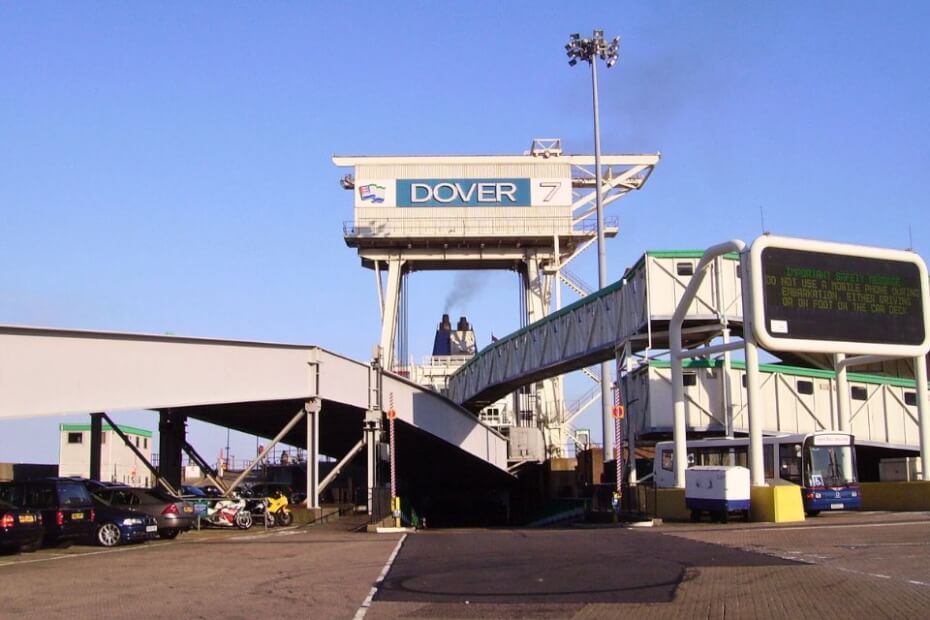
Preparations are underway in the United Kingdom (UK) for the launch of the European Union’s (EU’s) Entry/Exit System (EES).
The Port of Dover has set up a separate area for coaches while cars and other vehicles use regular lanes, according to the BBC.
Plans to reclaim a dock from the sea to create more space will help operations run more smoothly.
However, the projected timeline for reclaiming a dock will not coincide with the EES rollout in October 2024.
Due to its limited space, the port is already experiencing long lines during busy peak times.
Transport and local community officials in Kent have warned of 14-hour delays at the port once the EES is active.
The long queues would also create a massive traffic jam, blocking access to the town and affecting the local business economy.
“We have some critical issues to overcome,” said Port of Dover chief executive Doug Bannister, as per TTG Media.
However, he added that it can be done “with the right collaboration between industry and government.
“We can ensure we have the tools to deliver the smartest, most seamless, and sustainable travel long into the future, supporting the economy of Kent and the nation as a whole,” Bannister said.
EES checks at the Port of Dover
The chief executive said the Port of Dover’s EES plans aim to “minimize dwell times, queues and, of course, congestion out on the road network and throughout the town.”
Coach passengers will register for the EES at the Port of Dover’s western docks, a separate area from the port’s main check-in area.
The western docks will have coach halls and new kiosks where passengers can register their passports and biometric data.
Bannister said coach passengers must disembark, register their details, and reboard their coach.
“The coach will get sealed, and it will come down here to the ferry terminal,” he explained.
Dover’s chief executive added, “As long as the seal’s intact, the coach will proceed directly around to check-in.”
On the other hand, cars and other vehicles will use the regular lanes. A canopy will be installed for weather protection.
Bannister said car passengers will be “met by one of our agents with a tablet” to help them register their details for the EES.
However, the time it would take to go through border control at the Port of Dover will increase.
Due to EES registration, it would increase from 45 to 90 seconds to a couple of minutes or more per person.
By summer 2025, the Port of Dover plans to move car passenger EES checks to the western docks after reclaiming land to create more space.
It also plans to add more holding space to manage potentially long queues by September 2027.
EES could discourage coach continental crossing
Coach companies are worried that the EES would negatively impact the customer experience.
Cornwall-based Roselyn Coaches’ commercial manager, James Church, said any extra delays would take a toll on passengers and drivers.
By the time their coaches reach Dover, passengers have been on the road for hours, and a long wait would only be tiresome.
Church said a coach with 50 to 70 passengers would take “quite a long time” for everyone to register in the EES.
He added that the company did not want the EES to discourage continental coach crossings by tainting the travel experience.
It would also mean more cost for the company as drivers could hit their hours limit due to delays.
EES expected to cause major travel disruption
Using biometric data, the EES records travelers’ entry and exit from the Schengen Zone. It will replace manual passport stamping.
Two UK parliamentary committees have urged the government to persuade the EU to delay the EES launch. They claim the country is unprepared.
One committee said the EES launch would be more challenging as it coincides with the widespread rollout of the UK’s Electronic Travel Authorization (ETA).
The main concern is the anticipated long delays. Once the EES is active, travelers must register biometric data upon their first entry into the EU.
All short-stay visa holders and non-visa nationals must register facial and fingerprint scans before an EU border officer.
Their data will be stored in the system for three years. Storage time will refresh every time they enter the Schengen Zone.
However, if they revisit the EU after three years, they must register their biometric data before a border officer again.
The long queues are predicted to be worse at UK-EU borders with juxtaposed controls. These include the Port of Dover in Kent, St. Pancras Station in London, and the Channel Tunnel at Folkestone.
Juxtaposed controls mean that EU border officers perform immigration checks on travelers while still on UK soil.
Get Link, the Channel Tunnel operator, has invested €80 million to prepare its Coquelles and Folkestone terminals for the EES.
It recently finished a new covered drive-through bay that simultaneously accommodates up to 60 passenger vehicles.
On the other hand, Eurostar is installing more kiosks, electronic gates (eGates), and manual booths to help passengers with EES registration.
It is also ready to open an overflow area during peak hours if needed.
Both GetLink and Eurostar pledged that their terminals would be free of chaos and delays once the EES launches.

